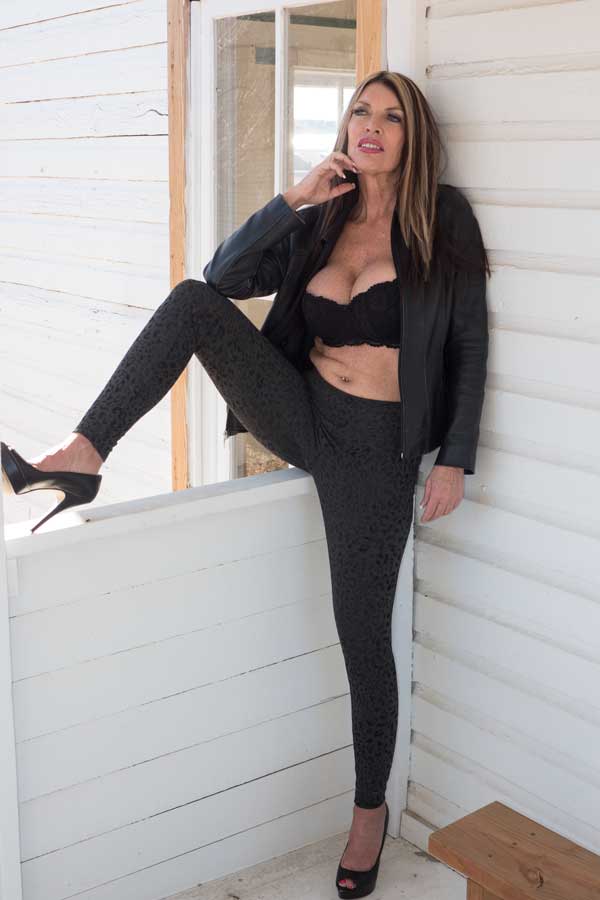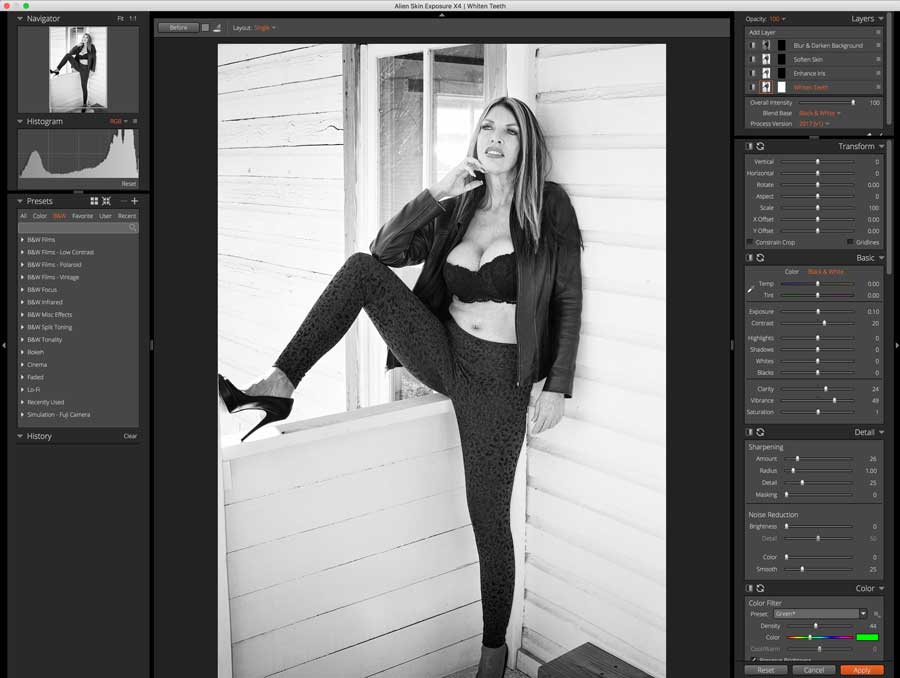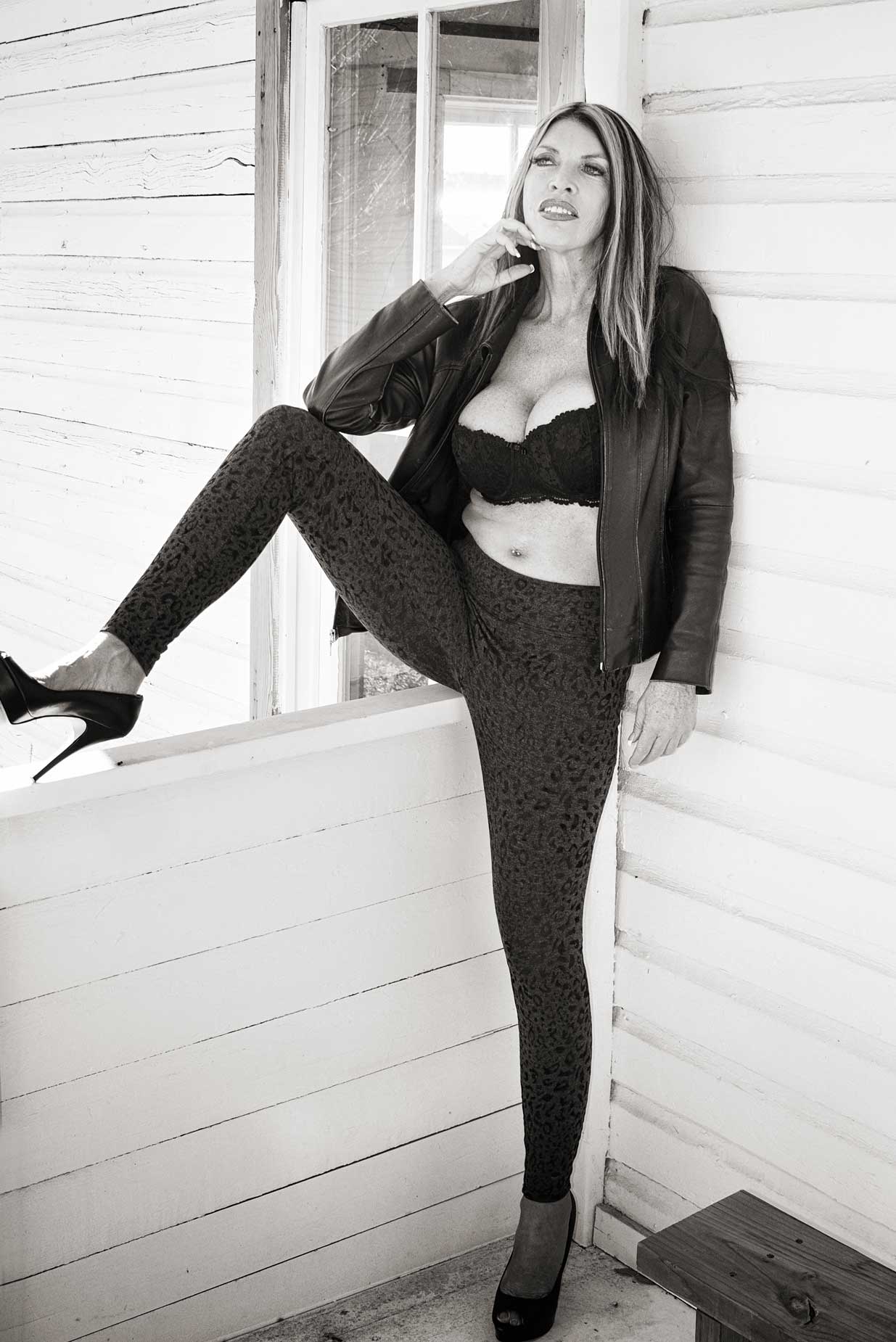Today’s Post by Joe Farace
Black and white creates a strange dreamscape that color never can. — Jack Antonoff
 Black and white is a wonderful method for creating portraits because it produces a classic look and last year several portrait photographers told me that many high school senior portraits—the ones they buy, not the required yearbook shot—are sold as black & white prints.
Black and white is a wonderful method for creating portraits because it produces a classic look and last year several portrait photographers told me that many high school senior portraits—the ones they buy, not the required yearbook shot—are sold as black & white prints.
I think one of the reasons for black and white’s popularity it’s because a lack of color simplifies an image, causing you to focus on the person, who is the real subject of the photograph, instead of their clothing or surroundings.
Sometimes the nature of the portrait’s subject demands the image be photographed in black and white. Arnold Newman’s memorable portrait of composer Igor Stravinsky sitting at a piano could never have been made in color and have the same impact it has as a monochrome image.
Monochrome Conversion
 (At right) This is what my original unretouched, unedited RAW file—Straight Out Of the Camera—of famous Internet model Maria Cedar looks like. She was photographed at the Hidden Mesa Open Space sitting on the porch of the gradually being restored (and now safe to stand on) porch of an historic farmhouse The portrait was captured using a Panasonic Lumix GH4 and Lumix G Vario 14-45mm f/3.5-5.6 lens (at 24mm) with an exposure of 1/125 sect at f/4.8 and ISO 200. The camera’s built-in flash was used as fill, although it could have used a little more fill or exposure compensation and is slightly underexposed.
(At right) This is what my original unretouched, unedited RAW file—Straight Out Of the Camera—of famous Internet model Maria Cedar looks like. She was photographed at the Hidden Mesa Open Space sitting on the porch of the gradually being restored (and now safe to stand on) porch of an historic farmhouse The portrait was captured using a Panasonic Lumix GH4 and Lumix G Vario 14-45mm f/3.5-5.6 lens (at 24mm) with an exposure of 1/125 sect at f/4.8 and ISO 200. The camera’s built-in flash was used as fill, although it could have used a little more fill or exposure compensation and is slightly underexposed.
 The original portrait was shot in color and converted to black and white with Exposure Software’s Exposure X4. The plug-in’s currently up to X7 but X4 is the only version that works with Photoshop CS6 and the OS I’m running on my 5K iMac..
The original portrait was shot in color and converted to black and white with Exposure Software’s Exposure X4. The plug-in’s currently up to X7 but X4 is the only version that works with Photoshop CS6 and the OS I’m running on my 5K iMac..
One of the upsides of converting a color shot to black & white, rather than direct monochrome capture, is that color images are easier to retouch than monochrome files because there are so many more tones to work with. So before conversion I retouched the image slightly using Photoshop’s Clone Brush and Healing Brush tools, then a (reduced layer of) Color Efex’s Skin Softener plug-in.
Using Exposure X4 I applied one of the plug-in’s black and white film emulations—Ilford Delta 100—and used the software’s extensive selection of sliders to tweak the results, including the application of one of my favorite colored filters—green.
I think the finished, (converted) monochrome image has more of an urban look and puts the focus on the subject. It was converted to monochrome, not just black-and-white, by using the Platinum filter that’s part of PhotoKit 2 producing an effect that has an ever-so-slightly warm tone that’s reminiscent of Agfa’s Portriga paper that was popular in the traditional wet darkroom.
Postscript: While the other images of Ms Cedar that were captured during this session are beautiful and tasteful, I regretfully cannot show you more of the portraits from this session. If I did it would run afoul of the nanny software used by corporations and social media companies. I hope someday I’ll have access to an on-line forum where I can display some of those kinds of photographs. Right now, I’m looking into creating one in 2023. Tumblr claims they have relaxed their censorship but based on my recent experience this is not true.

My book Creative Digital Monochrome Effects is still available from Amazon and (I think, anyway) is a fun read. There’s even a chapter on infrared photography. It’s available from them for $9.94 but bargain shoppers can pick up used copies starting at three bucks as I write this. No Kindle version is available at this time, sorry to say.